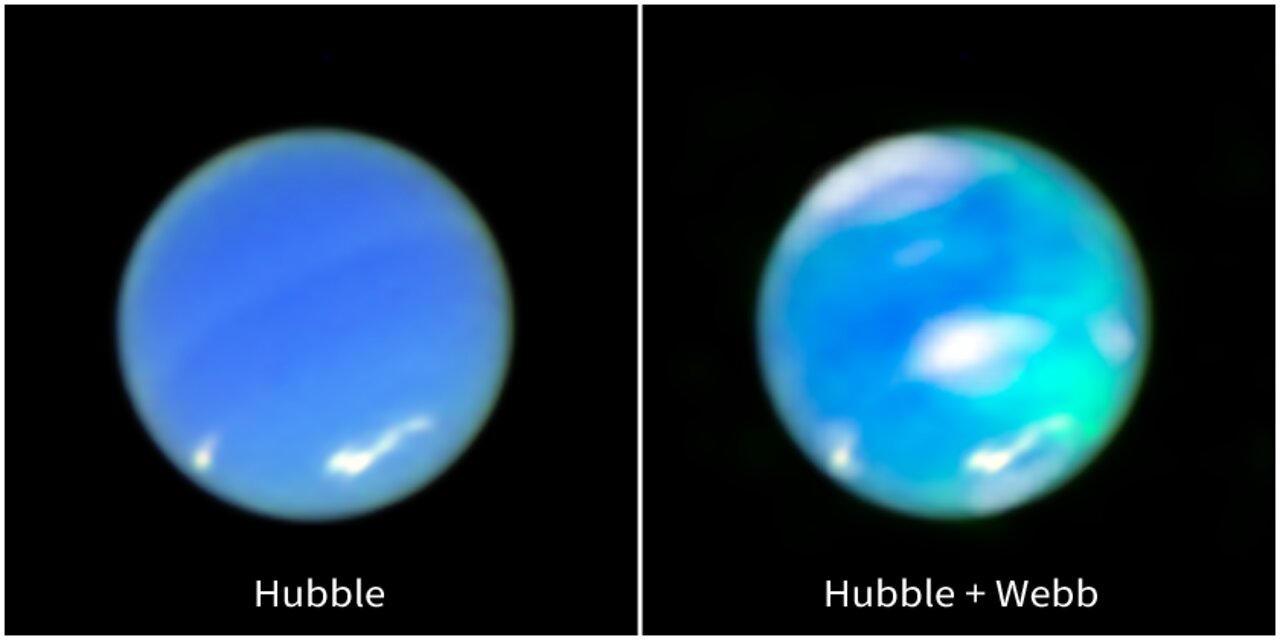Neptune Auroras (Hubble and Webb Image)
At the left, an enhanced-color image of Neptune from the NASA/ESA Hubble Space Telescope. At the right, that image is combined with data from the NASA/ESA/CSA James Webb Space Telescope. The cyan splotches, which represent auroral activity, and white clouds, are data from Webb’s Near-Infrared Spectrograph (NIRSpec), overlaid on top of the full image of the planet from Hubble’s Wide Field Camera 3.
Auroras occur when energetic particles, often originating from the Sun, become trapped in a planet’s magnetic field and eventually strike the upper atmosphere. The energy released during these collisions creates the signature glow.
Webb’s detection of auroras on Neptune is the first time astronomers have captured direct evidence of this phenomenon on the planet most distant from the Sun. In addition to the visible glow in the imagery, the spectrum from Webb also found an extremely prominent emission line signifying the presence of the trihydrogen cation (H3+), which can be created in auroras.
Neptune’s auroras do not occur at the northern and southern poles of the planet, where we see auroras on planets like Earth and Jupiter, because of the strange nature of Neptune’s magnetic field, which is tilted by 47 degrees from the planet’s rotational axis.
Webb’s study of Neptune also revealed that the planet’s upper atmosphere has cooled by several hundred degrees, likely the reason that Neptune’s auroras have remained undetected for so long.
This image was created from Hubble and Webb data from proposals: 17187 (R. Windhorst) and 1249 (B. Frye).
[Image description: A two-panel horizontal image. On the left is Neptune observed by the Hubble Space Telescope. It is a blue circle, tilted about 25 degrees to the left. There are white smudges at 7 o’clock and just above 5 o’clock. At right is an opposing view of the planet, using data from Hubble and Webb. It is a multi-hued blue orb. There are white smudges in the same spots as the image on the left, but also at the center of the planet and at the top. There are cyan smudges vertically along the right side, and the top of these areas are more translucent than the bottom.]
Credit:NASA, ESA, CSA, STScI, Heidi Hammel (AURA), Henrik Melin (Northumbria University), Leigh Fletcher (University of Leicester), Stefanie Milam (NASA-GSFC)
About the Image
| Id: | weic2507a | |
|---|---|---|
| Type: | Collage | |
| Release date: | 26 March 2025, 11:00 | |
| Related releases: | weic2507 | |
| Size: | 840 x 420 px | |


